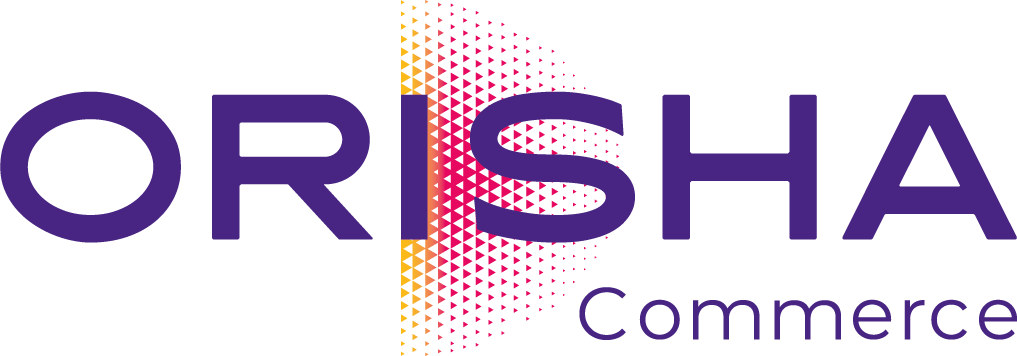The unified supply chain: tools and methods for effective logistics management

Navigating increasingly complex logistics flows has become a significant challenge for many companies. This disorganization leads to delays, elevated costs, and deteriorates customer satisfaction. As pressures on deadlines and service quality intensify, fragmented logistics turn into a strategic risk.
To maintain competitiveness, companies are pursuing complete visibility across their entire supply chain and enhancing their responsiveness. The primary challenge is acquiring tools that unify the various components into a single system. This article explores strategies and solutions to optimize logistics management, transforming the supply chain into a sustainable performance lever.
The unified supply chain: a strategic issue
Definition of the unified supply chain
A unified supply chain is an integrated method for managing the flow of goods, connecting the entire logistics chain on one platform. This integration promotes better coordination among all stakeholders compared to siloed systems.
This approach centralizes information from multiple systems into a single integrated environment, offering a cohesive view of logistics operations:
- Procurement planning;
- Customer delivery;
- Optimized inventory management;
- Returns processing.
A unified supply chain enhances retailers’ responsiveness and reduces blind spots, facilitating better decision-making.
The benefits of integrated management
Integrated supply chain management provides companies with comprehensive visibility over all logistics operations. This unified perspective on inventory, flows, delivery times, and service levels improves anticipation and diminishes errors caused by poor coordination.
An integrated supply chain facilitates seamless information exchange between purchasing, logistics, sales, and finance teams, streamlining decision-making processes. This coordination helps minimize disruptions and align priorities across the supply chain.
Economically, integrating the logistics chain allows for:
- Enhanced inventory control;
- Optimized delivery routes;
- Automation of tasks;
- More effective resource allocation.
A centralized supply chain better accommodates customer expectations, including click and collect, express delivery, and in-store returns.

Tools for effective logistics chain management
High-performance supply chain software
Supply chain software coordinates different flows, such as inventory and procurement, production, warehousing, transportation, and distribution. Some of the most effective tools are:
- WMS (Warehouse Management System) tracks real-time goods movements, manages storage locations, optimizes order preparation, and minimizes errors;
- OMS (Order Management System) centralizes customer orders, ensuring consistency across channels and reducing processing costs;
- Web order preparation tools assist points of sale in the ship-from-store or click-and-collect processes, allowing store teams to efficiently prep e-commerce orders;
- Advanced analytics solutions, including Business Intelligence and predictive AI, offer performance indicators to facilitate continuous improvement.
The importance of real-time dashboards
Dashboards offer a real-time overview of operations, equipping logistics managers with tools to swiftly respond to alerts. Their strength lies in monitoring key organizational indicators, such as:
- Service rates;
- Delivery times;
- Logistics costs;
- Disruption rates…
These metrics assist in stock optimization for unified commerce, ensuring effective actions and pinpointing bottlenecks. Additionally, by providing access to all stakeholders, dashboards enhance coordination. Each department can track relevant indicators and adjust priorities based on flow dynamics.
Real-time data bolsters predictive activity management by integrating sales history with customer behavior patterns.
Methods to optimize the logistics chain
Anticipating needs through digitalization
Digitalization is reshaping how logistical needs are anticipated. Through data analysis, demand can be modeled accurately, considering factors like sales history and promotions.
Digital tools enhance supply chain management by automatically triggering procurement decisions based on real demand. This approach increases supply chain agility through real-time updated information, enabling companies to model stock rotation according to specific points of sale and purchasing behaviors.
Managing product returns becomes easier in a digitized system, where each return can be tracked, qualified, and redirected, for example, to reconditioning. This circular approach aligns with sustainability and profitability goals, reducing waste, optimizing product use, and meeting current expectations of responsibility. Indeed, 64% of consumers consider sustainability a crucial criterion in their purchasing decisions.
Sustainable practices in sourcing and procurement
Integrating sustainable practices into supplier selection serves as a lever to optimize the logistics chain. Selecting suppliers based on environmental, social, and governance (ESG) criteria enhances the resilience of the supply chain.
Utilizing short supply chains, recycled materials, or certified suppliers helps reduce the carbon footprint of procurement and logistics flows. This approach shortens delivery times and minimizes disruption risks. An omnichannel stock management method complements this, facilitating more responsible product allocation.
Specialized digital platforms track product origins and evaluate suppliers’ environmental impact. These tools empower supply chain professionals to balance economic performance with social responsibility.
Integrating sustainable sourcing practices aligns with consumer and retailer expectations for genuine brand engagement on environmental issues. In 2024, 58% of consumers are expected to consider the ecological impact of their purchases, compared to 63% the previous year.

This shift impacts flow management through:
- Reducing packaging;
- Pooling transportation resources;
- Implementing reverse logistics…
Measuring customer satisfaction and profitability
Analyzing the impact on customer experience
Effective management of delivery speed, adherence to deadlines, product availability, and returns ease fosters customer loyalty. Conversely, falling short on these commitments can harm the customer experience.
An integrated supply chain eliminates channel disruptions, streamlining the customer journey. System synchronization allows customers to order in-store items online, choose home delivery, or pick up purchases at a store. This flexibility helps companies offer services tailored to different purchasing scenarios.
A centralized supply chain enhances the management of unexpected events. When disruptions such as supplier delays occur, the system’s transparency ensures rapid, personalized communication.
Logistics data analysis provides deeper insights into customer behaviors, identifying:
- Which products have the highest return rates?
- Which geographical regions experience recurrent delays?
Optimizing procurement and inventory management
Connected inventory management systems automatically initiate procurement based on actual and forecasted demand, replacing outdated approaches that rely on obsolete historical data.
Using rotating and permanent inventories improves the reliability of stock data. Additionally, intelligently allocating inventory across multiple distribution channels lowers logistics costs for companies.
Adopting a unified supply chain allows companies to manage operations more precisely, respond rapidly to disruptions, and ensure a consistent customer experience across all channels. This strategy is built on integrating appropriate tools, backed by real-time reliable information, enabling informed decision-making and fostering sustainable and agile logistics.
Centralizing flows transforms the integrated supply chain into a strategic driver for commercial performance and customer engagement.
Frequently asked questions
What is the supply chain?
A supply chain involves all stages and participants in the flow of products within a company, from procurement to delivery to the final customer.
What are the supply chain management tools?
Supply chain management solutions encompass ERP software, WMS, OMS, and real-time dashboards to manage flows and procurement.
What are the three types of flows managed in a supply chain?
Supply chain flows consist of:
- Physical: movement of goods from suppliers to customers;
- Information: exchanges of data required to coordinate operations;
- Financial: monetary transactions associated with supply chain activities.
How can the supply chain become more efficient?
To optimize logistics chain management, companies should:
- Utilize solutions for automating and synchronizing operations;
- Centralize information on a single platform;
- Streamline communication with logistics partners;
- Employ key indicators to refine forecasts and resource allocation;
- Favor responsible sourcing, minimize waste, and optimize transportation.
What are the key steps in the logistics chain process?
The key steps in the logistics chain include:
- Planning: evaluating demand, defining requirements, and organizing resources.
- Procurement: choosing partners and managing purchases.
- Production: manufacturing or assembling products according to specifications and timelines.
- Storage: managing inventory and optimizing warehouse operations.
- Distribution: coordinating transport and delivering products to customers or points of sale.
- Returns: processing returns, handling complaints, or dealing with defective products.
What are the advantages of a centralized supply chain?
Unified supply chain management offers:
- Visibility: centralized access to logistics information;
- Cost reduction: optimized inventory, transport, and resource allocation;
- Enhanced responsiveness: swift adaptation to disruptions and customer demand;
- Improved customer experience: seamless omnichannel services (delivery, click and collect);
- Enhanced collaboration: effective coordination among all supply chain stakeholders.
Schools and training programs are increasingly incorporating supply chain topics, underscoring its strategic importance in operations management.



